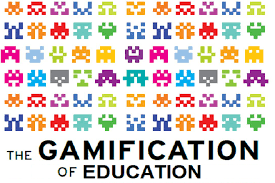
chapter one
Elements of Gamification
Elements of gamification
introduction
Breaking down Radoff’s four categories will help you think about different ways to view the elements in your course and inspire you to design new types of activities to deliver course objectives. Looking at the chart above, think about the four quadrants and ask yourself, “Have my students experienced any of these lately?”
choice
- Game systems incorporate choice and motivational mechanics, such as questing (adventure), gaining access (for example, to the palace), and preserving the open-ended process (where the player decides) by giving agency over to the player: student motivation and knowledge acquisition increase when we structure these elements into our content.
- In the open-ended game model, the choice is an invitation for students to explore unique, individual paths to content acquisition.
Flow
- Game designers know that players walk away from games that are either too easy or hard.
- Finding that “sweet spot” for the gamer is what psychologist Mihaly Csikszentmihalyi calls flow found in Flow and the Foundations of Positive Psychology.
- Flow is a state of heightened focus and immersion one experiences while participating in activities such as art, play, and work.
- He defines flow as the creative moment when a person is completely involved in an activity for its own sake.
- By using gamification, we can incorporate the power of flow into our classrooms and encourage self-motivation and “happiness of doing” in our students.
challenge
- Challenges are the unknown twists and turns that keep the learner engaged throughout the unit.
content
- Content is the curriculum and required standards.
micro-goals
social interaction
Immersion
Immersion is all about storytelling and designing a world that students can relate to and allow them to explore, grow, and create. We need to look at the larger theme, setting, and activities in our gamified classroom to maximize the immersion experience. Students feel empowered when they are allowed to become the heroes of their own stories.
Achievement
This category is about mastery, allowing the player to learn and practice a skill. We want to encourage repeat trials to reach proficiency without being punitive during the process. Giving students feedback through various game mechanics can be a great way to show achievement and support students in making informed decisions about the game and their learning. The difficult challenge in gamification is finding the sweet spot between making something trivially easy or insanely difficult. Schools are already set up with an achievement structure. Unfortunately, Achievers are the only ones who find that structure motivating, which leaves 75 percent of the student body disengaged. The gamified course design provides the means to engage all of your students.
Cooperation
Teamwork is at the core of this game element. Cooperation includes traits like altruism, coordination, coalition building, and grouping or banding together, which appeals to both Socializers and Explorers. Education is ripe for gamification of this sort. We can create meaningful experiences for our students by encouraging them to build collaborative teams. As team members work together toward a common goal, students develop a solid understanding of the course content and the value of positive communication.
Competition
The competition allows players to interact with one another, a draw for social players; however, competition is also a powerful draw for your Griefers and Achievers. Competition can be a great way to bond as a group and give rise to a more authentic collaboration. Think of your school’s sports teams. Players bond over a highly competitive experience and, at the same time, work to help one another. The competition allows us to build in quantitative tasks and social interaction between groups and students that incorporate important life skills.
Published: Apr 27, 2022
Latest Revision: Apr 27, 2022
Ourboox Unique Identifier: OB-1319974
Copyright © 2022








